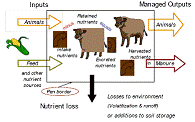Biological Systems Engineering, Department of

Department of Agricultural and Biological Systems Engineering: Presentations and White Papers
Date of this Version
8-2011
Document Type
Article
Citation
An ASABE Meeting Presentation, Paper Number: 1110971.
Written for presentation at the 2011 ASABE Annual International Meeting, Gault House, Louisville, Kentucky, August 7 – 10, 2011
Abstract
A John Deere 8295R IVT tractor with a continuously variable transmission (CVT) and a John Deere 8295R PowerShift (PST) tractor (Waterloo, Iowa) with a standard geared transmission (GT) were tested for fuel consumption at three different travel speeds with six different load levels applied per speed. The JD 8295R PST tractor was tested both at full throttle (FT) and shifted up two gears and throttled back (SUTB) to achieve the same travel speed as at full throttle conditions. For each travel speed with each transmission mode, fuel consumption was determined to be linearly related to drawbar power. Linear regression results showed that the tractor with the CVT was more fuel efficient than the tractor with the GT at FT when the power was below 76% to 81% of maximum drawbar power depending on the travel speed. The results also showed that above 37% to 52% of maximum drawbar power, the GT at SUTB was more fuel efficient than the CVT equipped tractor. As travel speed increased, the percent of maximum power below which the CVT was significantly more fuel efficient than the GT at FT decreased slightly. Likewise, the percent of maximum power above which the GT at SUTB was more fuel efficient than the CVT decreased as speed increased. In order to determine differences in fuel consumption between the tractor transmission operating modes, testing with at least three loads and at least three travel speeds is recommended. Additional testing is needed on other models of tractors from other manufacturers to determine whether the trends found in this study pertain to all CVT equipped tractors or if they are specific to this tractor model and manufacturer.


Comments
Copyright (c) 2011 C. N. Howard, M. Kocher, R. Hoy, & E. Blankenship.